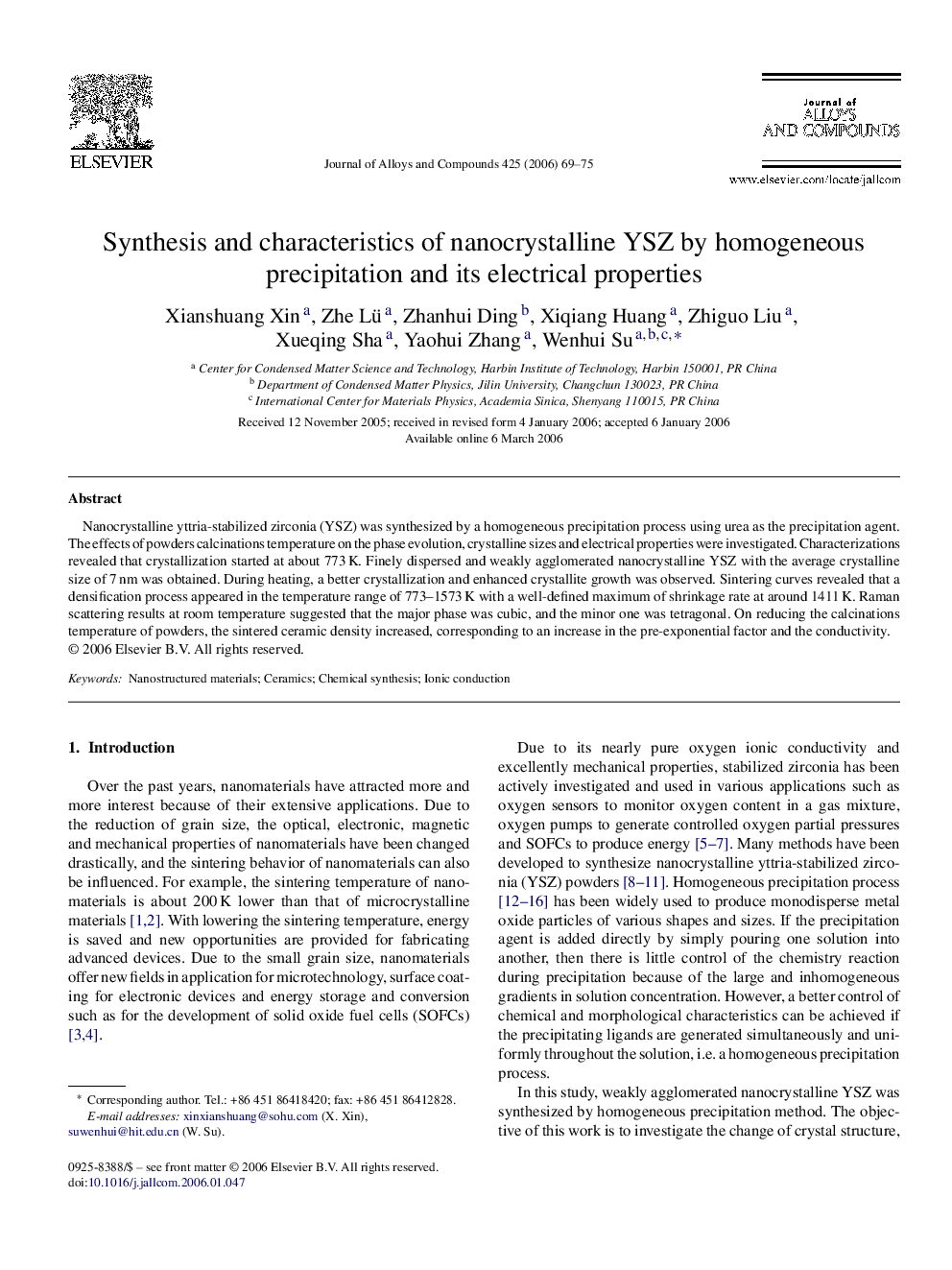| Article ID | Journal | Published Year | Pages | File Type |
|---|---|---|---|---|
| 1627136 | Journal of Alloys and Compounds | 2006 | 7 Pages |
Nanocrystalline yttria-stabilized zirconia (YSZ) was synthesized by a homogeneous precipitation process using urea as the precipitation agent. The effects of powders calcinations temperature on the phase evolution, crystalline sizes and electrical properties were investigated. Characterizations revealed that crystallization started at about 773 K. Finely dispersed and weakly agglomerated nanocrystalline YSZ with the average crystalline size of 7 nm was obtained. During heating, a better crystallization and enhanced crystallite growth was observed. Sintering curves revealed that a densification process appeared in the temperature range of 773–1573 K with a well-defined maximum of shrinkage rate at around 1411 K. Raman scattering results at room temperature suggested that the major phase was cubic, and the minor one was tetragonal. On reducing the calcinations temperature of powders, the sintered ceramic density increased, corresponding to an increase in the pre-exponential factor and the conductivity.
